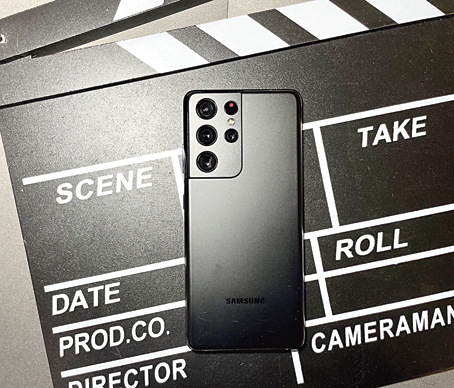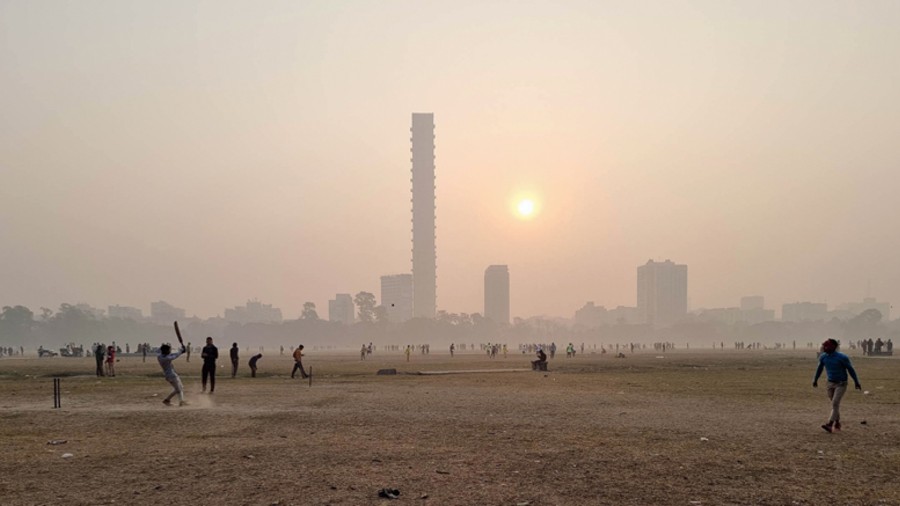Rarely do we get to celebrate celestial fireworks and when the occasion pops up, you would rather have a telescope or a pair of binoculars before you than a smartphone in your hand. No, I don’t get the idea of looking for a man on the moon with a smartphone. Samsung and Apple are improving zoom capabilities on their respective devices but hey, it’s not a telescope. But what these two brands are offering are powerful camera modules that can capture — without fail — things that matter to you.
Armed with the Samsung Galaxy S21 Ultra 5G, we went on a parade of places in Calcutta. Frankly, here’s a phone that makes Android smartphones look good; here’s a phone that sees the iPhone 12 Pro Max eye to eye. Let’s dive in.
Going that extra mile
All the things many have complained over the years — oversaturation, colour temperature, focus, slow shutter speed, subpar telephoto — have been fixed. Not perfect, no. But no smartphone is perfect. First, the biggest achievement here is telephoto. There are two telephoto cameras — 3x and 10x. At a glance, it’s a peculiar choice but on using the phone for three weeks, it’s a brilliant plan.
With the iPhone 12 Pro Max one can achieve 2.5x optical zoom, which never fails. The Ultra takes it to 3x, which is slightly better. And there’s more. Usually people end up zooming 2x or 3x and then it’s all digital zoom, which only gets worse. For those who want to zoom in further, 10x is ideal. What you get on the Ultra is that perfect 10x. Pictures come out extremely good and even the most powerful iPhone fails to deliver at this point.
Had Samsung done only the 3x, then everything beyond it wouldn’t have been up to scratch. So 1x to 3x is zoomed on the primary camera, everything from 3x to 10x is either on the primary or the second camera, depending on the light situation, and then everything from 10x and beyond, it’s all up to the periscope camera.
In fact, the company should focus more on the 10x aspect in future offerings instead of looking at the gimmicky 100x space zoom. Yes, there has been a lot of improvements on the 100x zoom front: It’s more stable and easier to use because the user can lock the subject. When you have zoomed all the way, the camera tries to identify the subject in the frame and locks the viewfinder to track it, reducing the amount of shake. Agreed that it can latch on to something you may not want to focus on (you can zoom out and zoom back in to fix it) but the improvement is tremendous. Will I use it? Perhaps now and then. Will I use the 10x zoom? Oh yes!

The clarity delivered by the 10x telephoto lens surpasses all phones, like in this snap taken in Dalhousie around 7am The Telegraph
Camera tuning
Some of the pesky issues in past flagship devices have been ironed out. When you first open the selfie camera app, Samsung asks whether you want to take natural or bright selfie colour tone, instead of defaulting to ‘bright’ all the time. It’s a small but excellent update.
Also top-of-the-line are macro shots without having a macro lens. The camera app can detect when you are trying to take a close-up and switches to macro. But you don’t need an extra lens. The phone uses the ultra-wide camera and uses the super-close minimum focus outstandingly well to take solid shots.
Plus, there is laser autofocus, which works 99 per cent of the time. I would have liked to see something on the lines of Lidar technology which is there on the iPhone 12 Pro, but Samsung is getting there. With Lidar, there is no hit-and-miss because the technology basically bounces signals off objects and returns distance-related information to the camera, which is especially helpful at night.
When it comes to videos, the big improvement involves recording 4K@60fps on all the cameras (including the selfie shooter). You can also record 8K video up to 30fps but you it will take up a lot of space. This is where there is some room for complaining. There is no mircoSD slot on the phone and if you are in the mood to take only 8K videos, you will soon be out of space.
Another cool upgrade is Director’s View that allows video recording from multiple cameras simultaneously, which is enabled by the processor. It takes the phone closer to what Filmic Pro app does on the iPhone. Sadly, the recording using Director’s View is a single stream (not multiple, like on Filmic Pro).
And a suggestion. There is the option to take a full 108MP shot. Usually, there is nona binning or taking groups of nine pixels and treating them as one big super pixel, which captures more information. When you take a full 108MP shot, information from every single pixel on the sensor is there but there isn’t enough light information in each pixel, so the images may end up slightly grainy. Technically, you can zoom in a lot more on the resulting image but it still doesn’t look very good. You would rather think of zoom in 3x or 10x.

Samsung has finally got the colour profile spot on. Here’s a photo from the flower market in Howrah at 6.15am The Telegraph
A photo finish
At a time when it’s getting harder to take a truly bad photo on a good smartphone, the Ultra has come in with some fine technology improvements, especially the use of telephoto lenses. If you ask me which one is better — iPhone 12 Pro Max or Galaxy 21 Ultra, the answer is simple: Both; it all depends on whether you like iOS or Android. It’s literally a photo finish. What Samsung Galaxy S21 Ultra 5G has managed is take smartphone photography to an unprecedented level of creativity and control.
Camera high notes

- Dual telephoto lens
- 4K@60fps recording on all the cameras
- Director’s View allows simultaneous recording from different lenses
- Better stability at 100x zoom
- Natural colour profile
- Excellent audio recording
- There is a 12-bit RAW file option for professional photographers; you won’t miss any detail when editing photos
- Improved night mode, noise reduction











